| [1] 白金,许可可,赵树华,等.老年人工全髋关节置换术后康复治疗的研究进展[J].中华老年骨科与康复电子杂志,2018,4(2):125-128. [2] Eulenburg C, Rahlf AL, Kutasow A, et al. Agreements and disagreements in exercise therapy prescriptions after hip replacement among rehabilitation professionals: a multicenter survey. BMC Musculoskelet Disord. 2015; 16(1):185. [3] Tsukagoshi R, Tateuchi H, Fukumoto Y, et al. Functional performance of female patients more than 6 months after total hip arthroplasty shows greater improvement with weight-bearing exercise than with non-weight-bearing exercise: a randomized controlled trial. Eur J Phys Rehabil Med. 2014;50(6):665-675. [4] Shih CH, Du YK, Lin YH, et al. Muscular recovery around the hip joint after total hip arthroplasty. Clin Orthop Relat Res. 1994;302(302):115-120. [5] Mp VDB, Sierevelt IN, Bonke H, et al. The natural history of the hemiarthroplasty for displaced intracapsular femoral neck fractures. Acta Orthopaedica. 2013;84(6):555-560. [6] 郑典涛. 生物型全髋关节置换术后早期完全负重的研究进展[J]. 中国临床新医学,2017,10(4):395-398. [7] 王文慧,张利峰,李信欣,等. 髋关节置换术后患者不同时期关节功能变化及其影响因素研究[J]. 中华护理杂志, 2017, 52(6): 649-653. [8] Ibrahim MS , Alazzawi S , Nizam I , et al. An evidence-based review of enhanced recovery interventions in knee replacement surgery. Ann Royal Coll Surg Engl. 2013;95(6): 386-389. [9] Larsen K, Sørensen OG, Hansen TB, et al. Accelerated perioperative care and rehabilitation intervention for hip and knee replacement is effective: A randomized clinical trial involving 87 patients with 3 months of follow-up. Acta Orthopaedica. 2008; 79(2):149. [10] Harris WH. Traumatic arthritis of the hip after dislocation and acetabular fractures: treatment by mold arthroplasty. An end-result study using a new method of result evaluation. J Bone Joint Surg.1969; 51(4):737-755. [11] Engh CA, Massin P, Suthers KE. Roentgenographic assessment of the biologic fixation of porous-surfaced femoral components. Clin Orthop. 1990;257(257):107. [12] 柏广涛,马跃文,姜亮. 生活质量评定简表SF-36的国内外应用进展[J]. 医学临床研究, 2009, 26(12):2367-2369. [13] Wilmore DW, Kehlet H. Management of patients in fast track surgery. BMJ. 2001; 322(7284):473. [14] Jasty M, Bragdon CR, Zalenski E, et al. Enhanced stability of uncemented canine femoral components by bone ingrowth into the porous coatings. J Arthroplasty. 1997;12(1):106-113. [15] 邹渊渊.人工髋关节假体系统的生物力学研究[D]. 天津:天津大学, 2006. [16] 汪鑫,杨延砚,周谋望,等. 全髋关节置换术后早期负重可行性的研究进展[J]. 中国骨与关节杂志,2018,7(6):454-458. [17] Schaefer A, Hotfiel T, Pauser J, et al. Incompliance of total hip arthroplasty (THA) patients to limited weight bearing. Arch Orthop Trauma Surg. 2015;135(2):265-269. [18] 王晓楠. 影响术后立即负重后非骨水泥型全髋假体下沉的相关因素[D]. 长春:吉林大学, 2011. [19] Kishida Y, Sugano N, Sakai T, et al. Full weight-bearing after cementless total hip arthroplasty. Int Orthop. 2001; 25(1): 25-28. [20] 李永奖. 非骨水泥型人工髋关节假体固定界面骨整合力学分析[J]. 中国骨伤,2014,27(4):316-320. [21] Tian P, Li ZJ, Xu GJ, et al. Partial versus early full weight bearing after uncemented total hip arthroplasty: a meta-analysis. J Orthop Surg Res. 2017;12(1):31. [22] Wolf O, Mattsson P, Milbrink J, et al. Effects of postoperative weight-bearing on body composition and bone mineral density after uncemented total hip arthroplasty. J Rehabil Med. 2013;45(5):498-503. [23] Marques EM, Jones HE, Elvers KT, et al. Local anaesthetic infiltration for peri-operative pain control in total hip and knee replacement: systematic review and meta-analyses of short- and long-term effectiveness. BMC Musculoskelet Disord. 2014;15(1):1-20. [24] 张建,卢林,康立新. 快速康复外科理念在髋膝关节置换术中的初步应用[J]. 中国矫形外科杂志, 2016, 24(14):1269-1273. [25] Unver B, Karatosun V, Gunal I, et al. Comparison of two different rehabilitation programmes for thrust plate prosthesis: a randomized controlled study. Clin Rehabil. 2004;18(1): 84-91. [26] Zuckerman JD, Skovron ML, Koval KJ, et al. Postoperative complications and mortality associated with operative delay in older patients who have a fracture of the hip. J Bone Joint Surg.1995;77(10):1551-1556. [27] 王宇,张攀,韩文锋,等. 快速康复理念在髋关节置换围手术期中的应用[J]. 实用骨科杂志,2017,23(2):110-113. [28] Umpierres CS, Ribeiro TA, Marchisio ÂE, et al. Rehabilitation following total hip arthroplasty evaluation over short follow-up time: randomized clinical trial. J Rehabil Res Dev. 2014;51 (10):1567-78. [29] Murphy CG, Carrothers AD. Fix and replace; an emerging paradigm for treating acetabular fractures. Clin Cases Miner Bone Metab. 2016;13(3):228-233. |
.jpg)
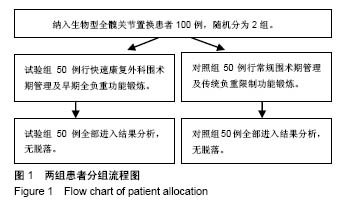
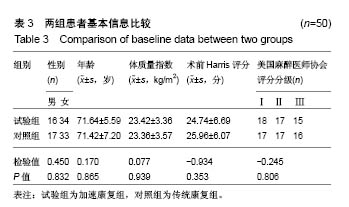
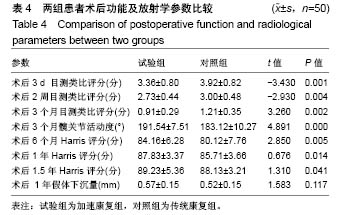
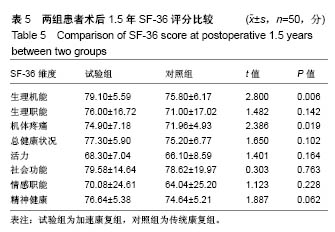
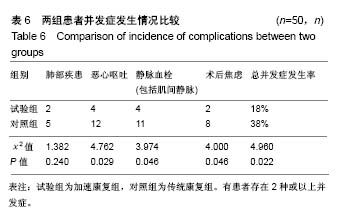
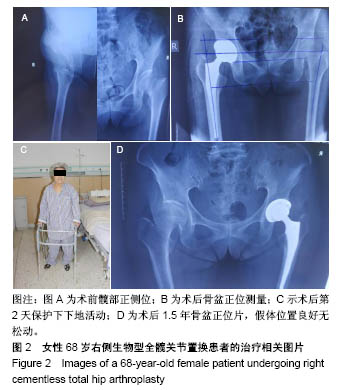
.jpg)
.jpg)
.jpg)